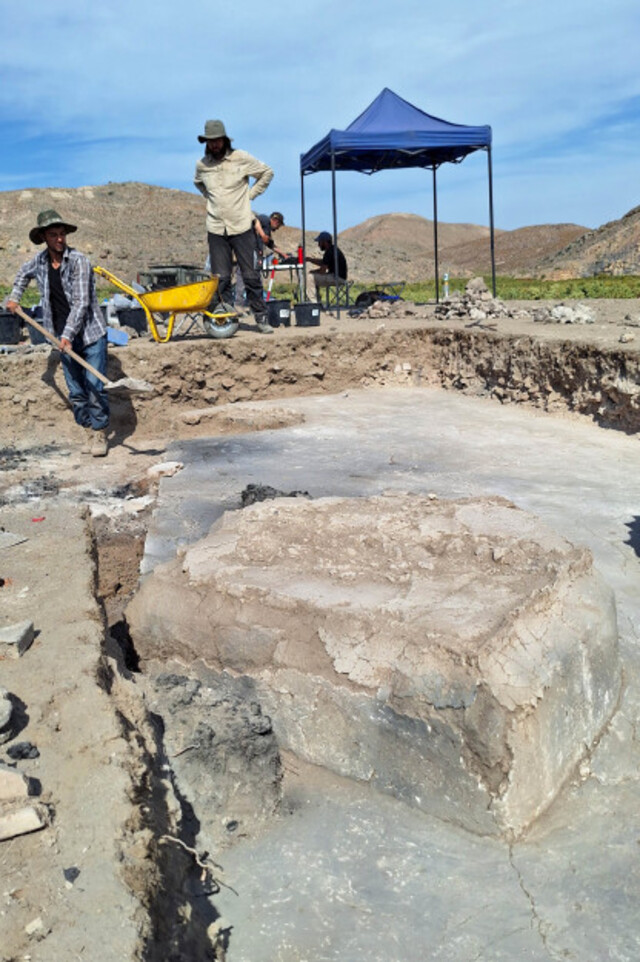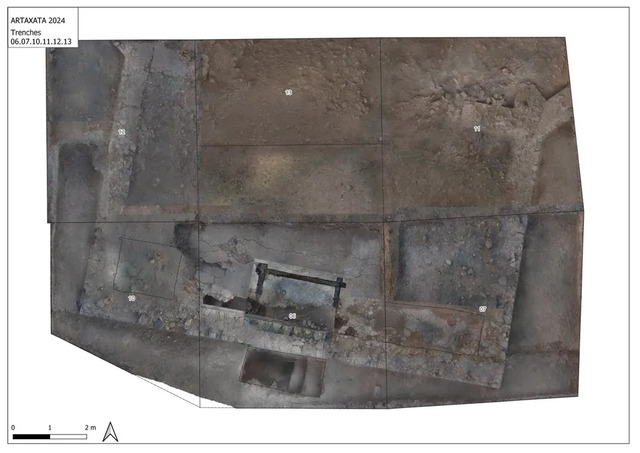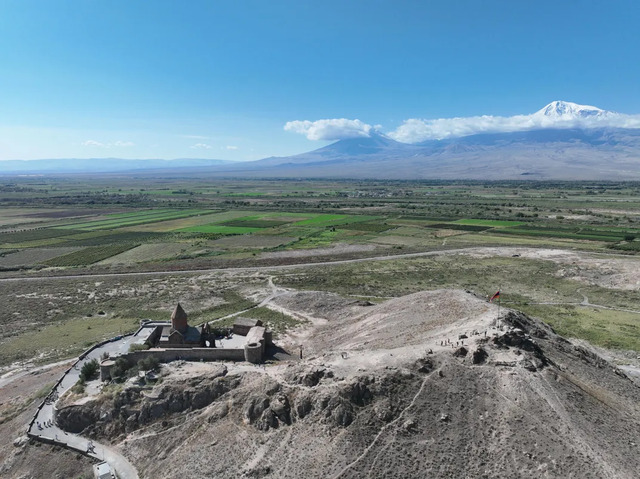In the heart of Armenia, an extraordinary archaeological discovery has shed new light on the early days of Christianity. An octagonal church, dating back to around 350 C.E., has been uncovered in the ancient city of Artaxata, once the capital of Armenia. This monumental find not only represents the earliest known Christian church in Armenia but also stands as one of the oldest Christian churches in the world. The discovery offers a rare glimpse into the early Christian history of Armenia, the first nation to officially adopt Christianity, providing invaluable evidence of the country’s religious transformation.
The Discovery of the Octagonal Church
The excavation of the octagonal church in 2023, led by researchers from the University of Münster in Germany and the National Academy of Sciences of Armenia, marks a significant milestone in the study of early Christian architecture. Located in the ruins of Artaxata, an ancient city that served as Armenia’s capital for nearly six centuries, this church’s discovery has provided archaeologists with a rare and exciting insight into the religious practices of the time.
The site, which had been under investigation since 2018, revealed the church’s foundations, dating back more than 1,600 years. With a nearly 100-foot wide octagonal floor plan, the church stands as a unique and monumental structure. Its design, complete with cross-shaped extensions, showcases the advanced architectural knowledge of the early Armenians and their deep connection to Christian symbolism.
Video
Check out the video to explore the discovery of Armenia’s oldest church. This incredible find offers a deeper look into the region’s ancient history and religious heritage!
Historical Background of Christianity in Armenia
Armenia’s adoption of Christianity in the early fourth century C.E. marks a pivotal moment in world history. According to legend, King Tiridates III, who had been raised and educated in Rome, was converted to Christianity by Saint Gregory the Illuminator in the early 300s. After his conversion, King Tiridates declared Christianity the state religion of Armenia, making it the first Christian nation, decades before the Roman Empire officially embraced Christianity in 380 C.E.

The discovery of the octagonal church in Artaxata provides further evidence of Armenia’s early and significant role in the history of Christianity. The country’s conversion was not merely a political move but a deeply spiritual one, with churches like the one discovered in Artaxata serving as symbols of the new faith that took root across the region. The church serves as a physical representation of Armenia’s dedication to Christianity, a belief that would continue to shape the nation’s culture, politics, and identity for centuries to come.
The Architectural Significance of the Church
The octagonal shape of the church is both architecturally and symbolically significant. The number eight, represented by the octagon, is a Christian symbol of rebirth and resurrection, referencing the eight days that passed between Jesus’s entry into Jerusalem and his resurrection. The octagonal design, while uncommon in Armenia, was popular in the Eastern Mediterranean during the fourth century C.E. and has strong associations with early Christian architecture.
The cross-shaped extensions of the church add another layer of religious symbolism, providing a more expansive space for worshippers while also emphasizing the importance of the Christian cross. Researchers found that the church’s floor was laid with a simple mortar base and terracotta tiles, which would have been a common building material at the time. The structure’s relatively simple materials, however, do not detract from the grandeur of its design and significance. The octagonal shape, in particular, connects the building to other early Christian sites, marking it as a part of a larger architectural tradition.
Findings from the Excavation

Excavations at the site also uncovered wooden podiums in the church’s annexes, with the remains of wooden platforms radiocarbon dated to around 350 C.E. This discovery further solidifies the church’s place in early Christian history, offering concrete evidence of its use for religious ceremonies. The wooden podiums likely held an important ceremonial role, facilitating the worship and rituals that took place within the church’s walls.
Additionally, pieces of marble were found at the site, indicating that the church may have once been adorned with imported Mediterranean stone. This suggests that even in its early days, the church was a place of great significance, capable of attracting artisans and materials from outside Armenia. The marble, along with other findings, underscores the importance of the church as not just a religious site but also a cultural and economic hub within the region.
Comparative Analysis with Other Early Christian Monuments
The octagonal church in Artaxata is not the only early Christian site in Armenia, but its discovery adds an important layer to our understanding of the region’s religious history. Nearby, the Khor Virap monastery, dating back to the seventh century, offers another significant connection to Armenia’s early Christian heritage. Etchmiadzin Cathedral, about 20 miles to the north, is widely considered to be the world’s oldest cathedral and was built around the same time as the Artaxata church.
However, the exact age of Etchmiadzin Cathedral has yet to be confirmed through archaeological evidence, while the Artaxata church’s discovery provides concrete proof of Armenia’s early Christian architecture. The unique octagonal structure of the church in Artaxata further distinguishes it from other early Christian monuments in the region, highlighting the innovative and symbolic design choices made by early Armenian Christians.

The Role of the Church in Early Armenian Christianity
The Artaxata church is more than just an architectural marvel—it is a testament to the early Christianization of Armenia. Its design and construction reflect the cultural, spiritual, and political transformation that took place when Armenia became the first Christian state. As Christianity spread across the country, churches like the one in Artaxata helped solidify the faith’s place in Armenian society. The church served not only as a place of worship but also as a symbol of the nation’s identity, marking Armenia’s role in the larger Christian world.
The church’s discovery further emphasizes the importance of Artaxata in early Armenian history. As the capital of Armenia for nearly six centuries, Artaxata was a center of political power, culture, and religion. The church’s construction during this time reinforces the idea that Christianity was a foundational aspect of Armenian life, intertwined with the country’s development and identity.
Future Excavations and Research Goals
The excavation of the octagonal church is far from over, and archaeologists plan to continue studying the site in the coming years. Researchers hope to uncover more details about the church’s origins, including the identity of the person to whom it was originally dedicated. Additionally, further analysis of the church’s foundations could offer more insights into the broader history of early Armenian Christianity and its influence on the region.
As the excavation progresses, the site is likely to become an even more important center for understanding early Christianity in Armenia and the broader Eastern Mediterranean. The discovery of the octagonal church not only sheds light on Armenia’s past but also serves as a powerful reminder of the country’s crucial role in the history of Christianity.
Video
Watch the video for a summarized history of Armenia. It covers key events and milestones that shaped this ancient and resilient nation!
Conclusion
The discovery of Armenia’s oldest Christian church in Artaxata is a monumental archaeological find that offers a rare glimpse into the early Christian history of the country. The octagonal church, dating back to around 350 C.E., serves as a symbol of Armenia’s early adoption of Christianity and the nation’s lasting religious transformation. As excavations continue, the church’s significance will only grow, deepening our understanding of Armenia’s place in the history of Christianity and its enduring cultural heritage. This discovery not only enriches the historical narrative of Armenia but also reinforces the timeless connection between faith, architecture, and national identity.



